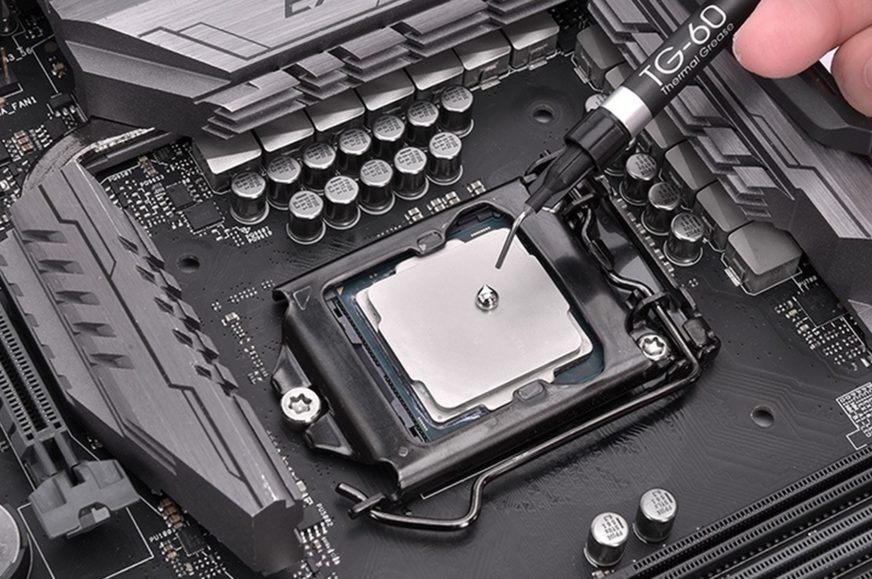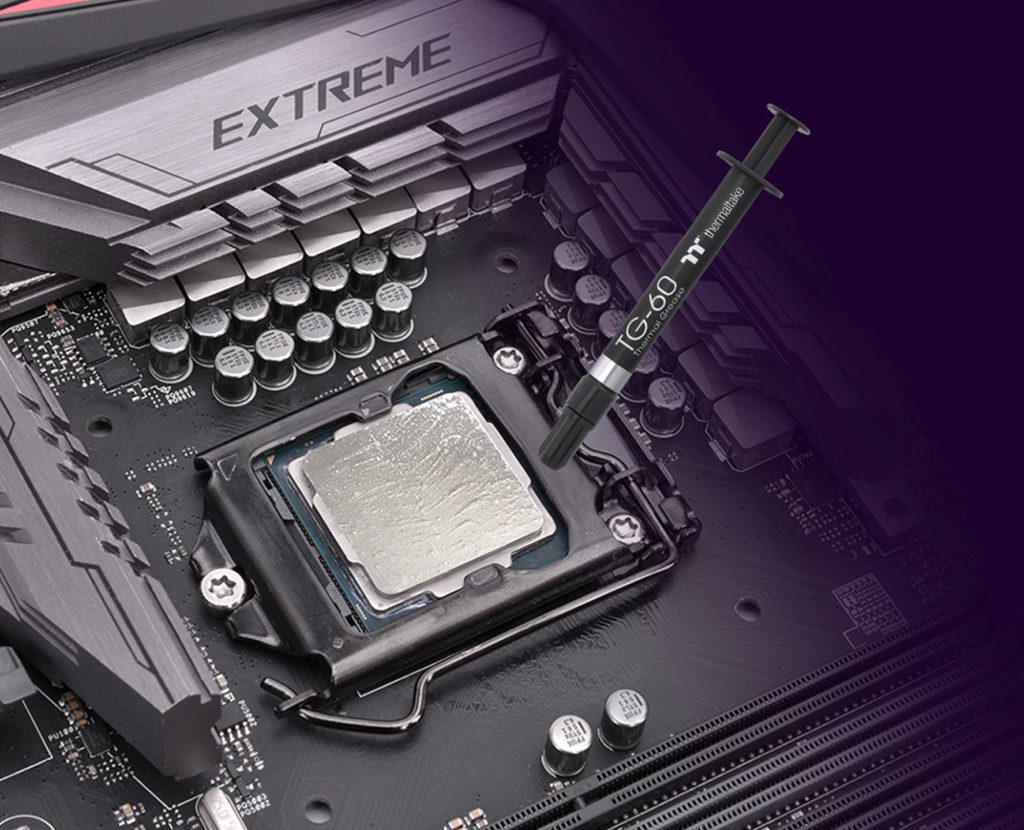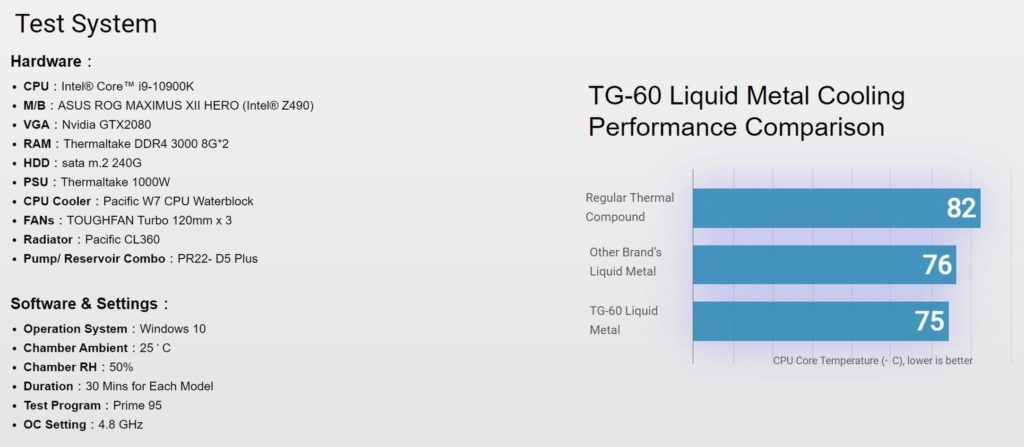Thermaltake TG-60 liquid metal
The choice of liquid metals is rather limited. And even the few options, that are designed for application in PCs, have fairly poor distribution. This could be changed/improved by the involvement of Thermaltake, which after all has a wider field of operation than the above mentioned companies. Their solution (TG-60) is a replacement for conventional pastes, but with significantly higher thermal conductivity.
Although the demand for liquid metals is smaller than years ago, at the peak of popularity of Intel processor deliding (Ivy Bridge to Coffee Lake), there might still be a place for them in the market. This is perhaps even in the context of the high temperatures of the new AMD Ryzen 7000 processors. Removing the heatspreader is already more complicated due to its soldering, but some enthusiasts are not deterred by the increased risk and more complicated work even with Intel Coffee Lake refresh processors. That is, the generation that broke the long streak of processors with paste as the thermal interface between the silicon chip and its heat spreader (IHS).
But back to the new product that Thermaltake has prepared and already put on sale. The liquid metal with the TG-60 designation has a label thermal conductivity of 52 W/mk. This is admittedly less than what Thermal Grizzly claims for Conductonaut (73 W/mk) or Coolaboratory claims for Liquid Ultra (90 W/mk), but that doesn’t mean it really has to be.
It can’t be ruled out that Thermaltake is the only one stating it correctly and the others are embellishing. Even the Coolaboratory Liquid Ultra did not perform better than the Conductonaut Thermal Grizzly in our tests, although it has a higher thermal conductivity in the parameters. And even if it was a solution with the lowest thermal conductivity, it is still several times higher compared to silicone-based thermal pastes. The thermal pastes we once tested have thermal conductivities presented in the range of 1.7–12.5 W/mk. Recall that for the Thermaltake TG-60, it’s as high as 52 W/mk.
Compared to TG Conductonaut, the new liquid metal is said to have the same weight per cubic centimetre (6.2 g), but at 14 % lower viscosity. Thus, the parameters of TG-60 promise that it is a thinner compound that could eventually be better able to fill the smallest of gaps between contact surfaces. There is also a larger optimal working temperature range (3–200℃), both lower and upper limits, than for Conductonaut. But again, these are only paper numbers, and it would be disadvantageous from a marketing point of view not to surpass them with a newer model.
The TG-60 is only available in one size for now, with a 1-gram pack. The Thermal Grizzly also has it this way, so it’s a fairly accurate price comparison. These are very similar – around 11 euros. Traditionally, only proper tests will show which of the pastes is more effective. According to Thermaltake’s internal tests, the TG-60 is supposed to keep the Core i9-10900K cores under the Pacific CL360 cooler at a one degree Celsius lower temperature compared to some other, competing but unnamed liquid metal (maybe it’s the one from Thermal Grizzly?).
And the cooling was apparently done at a relatively high thermal output, as the configuration note contains information about overclocking the processor to 4.8 GHz. So we’ ll see… Sooner or later we’ll get around to testing thermal interfaces at HWC.
English translation and edit by Jozef Dudáš
- Contents
- Thermaltake TG-60 liquid metal











